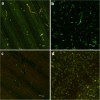Adhesion of Streptococcus mitis and Actinomyces oris in co-culture to machined and anodized titanium surfaces as affected by atmosphere and pH
- PMID: 23298213
- PMCID: PMC3556164
- DOI: 10.1186/1472-6831-13-4
Adhesion of Streptococcus mitis and Actinomyces oris in co-culture to machined and anodized titanium surfaces as affected by atmosphere and pH
Abstract
Background: With the rising demand for osseointegrated titanium implants for replacing missing teeth, often in patients with a history of periodontitis, implant-related infections have become an issue of growing concern. Novel methods for treating and preventing implant-associated infections are urgently needed. The aim of this study was to investigate if different pH, atmosphere and surface properties could restrict bacterial adhesion to titanium surfaces used in dental implants.
Methods: Titanium discs with machined or anodized (TiUnite™) surface were incubated with a co-culture of Streptococcus mitis and Actinomyces oris (early colonizers of oral surfaces) at pH 5.0, 7.0 and 9.0 at aerobic or anaerobic atmosphere. The adhesion was analysed by counting colony forming (CFU) units on agar and by confocal laser scanning microscopy (CLSM).
Results: The CFU analysis showed that a pH of 5.0 was found to significantly decrease the adhesion of S. mitis, and an aerobic atmosphere, the adhesion of A. oris. S. mitis was found in significantly less amounts on the anodized surface than the machined surface, while A. oris was found in equal amounts on both surfaces. The CLSM analysis confirmed the results from the CFU count and provided additional information on how the two oral commensal species adhered to the surfaces: mainly in dispersed clusters oriented with the groves of the machined surface and the pores of the anodized surface.
Conclusions: Bacterial adhesion by S. mitis and A. oris can be restricted by acidic pH and aerobic atmosphere. The anodized surface reduced the adhesion of S. mitis compared to the machined surface; while A. oris adhered equally well to the pores of the anodized surface and to the grooves of the machined surface. It is difficult to transfer these results directly into a clinical situation. However, it is worth further investigating these findings from an in vitro perspective, as well as clinically, to gain more knowledge of the effects acid pH and aerobic atmosphere have on initial bacterial adhesion.
Figures






References
-
- Jungner M, Lundqvist P, Lundgren S. Oxidized titanium implants (Nobel Biocare TiUnite) compared with turned titanium implants (Nobel Biocare mark III) with respect to implant failure in a group of consecutive patients treated with early functional loading and two-stage protocol. Clin Oral Implants Res. 2005;16(3):308–312. doi: 10.1111/j.1600-0501.2005.01101.x. - DOI - PubMed
-
- Schou S, Holmstrup P, Worthington HV, Esposito M. Outcome of implant therapy in patients with previous tooth loss due to periodontitis. Clin Oral Implants Res. 2006;17(Suppl 2):104–123. - PubMed
Publication types
MeSH terms
Substances
LinkOut - more resources
Full Text Sources
Other Literature Sources
Molecular Biology Databases

